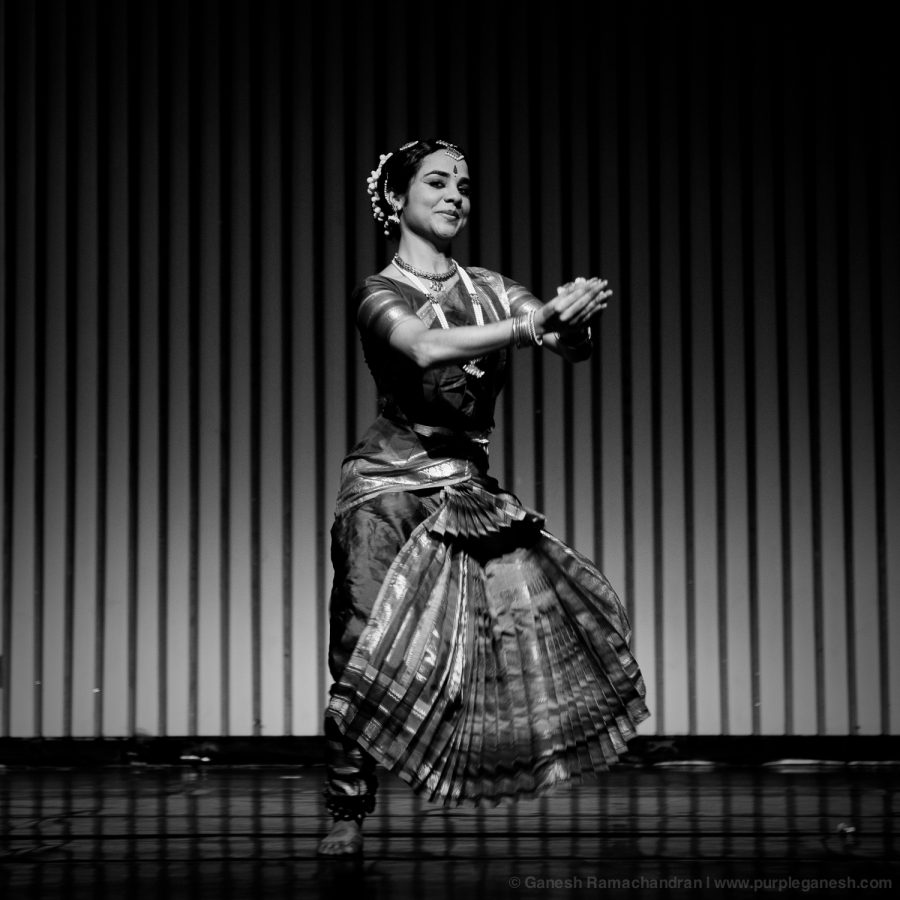Traditional Indian Dance: Malini Srinivasan Performance
Bharatanatyam is one of India’s oldest traditional dance forms and typically regarded as the mother of many forms of Indian dance. The dance is historically tied to a female community known as the Devadasi. On Friday, October 4, Malini Srinivasan performed the most classical version of a Bharatanatyam, known as a Margham, at the Palace Theater.
The Devadasi were a community of dancers and musicians who were known for their matrilineal family structure and heritage. These women often became poets who studied music and dance, allowing them to become educated in ways many women during their time did not have access to. Srinivasan explained that the Devadasi had their heyday in the 17th and 18th centuries when Hindu temples and royal courts provided patronage to their arts.
The Devadasi were revered for their contributions to the land, not just through cultural entertainment, but through their auspicious nature. Much of auspiciousness is tied with sexuality, fertility and reproduction, all things that help propagate the creation of life. The Devadasi came to represent auspiciousness as Bharatanatyam blurs the lines of devotion and armouresse love between devotee and deity.
“The only thing we have that comes close to the passionate love of god is romantic love,” Srinivasan said.
Desire and longing thus became expressed through Srinivasan as she danced. However, by the 20th century, the sexual nature and desire that was once the object of the performance came under scrutiny. The Devadasi’s way of life became endangered as the courts and temples lost power under the British Empire, leaving the Devadasi to turn to individual patrons for support.
India began to alter its national identity, redefining which aspects of their culture were going to stay and which were going to be left behind.
“India began reconstructing the idea of who a woman should be. The Devadasi became another example of this notion of India’s grotesque past. It was depicted as women selling their children into slavery to the temple who were their pimps. That’s how it was framed,” Srinivasan said.
When the Devadasi were patronized by the temples, they were working artists. They were getting gold, land and other means of supporting themselves materially. The degradation of this tradition lead to an inability to contextualize this way of life.
“The fact that temples patronized this, and the fact that she was considered a prostitute, a lot of people put those two together and called the Devadasi temple-prostitutes. Which is putting a later lense on what happened before. It’s putting Victorian moral ideas onto a totally different world view,” Srinivasan said.
“When we look at it now we think, wow they were so progressive. We look at it with the lens of feminism. We look at do women have agency, do women have access to resources? But when people looked at it in the 20th century they saw women who were oppressed by temples and their male priests.”
Despite coming from a high caste, Bhraman family aspects of the Devadasi resonate with Srinivasan’s own life and experience. While the Devadasi passed on material wealth from mother to daughter, Srinivasan inherited dance, learning the traditional Bharatanatyam dance style from her mother, who learned it from her mother before her.
Srinivasan’s grandmother began to pursue dance after becoming a widow, seeking to make a role for herself where there traditionally was none. Creating a dance school allowed her to create a community around her through dancers, musicians and students.
“I think I definitely draw a lot of strength from the idea of this woman going at it alone. I’m not married, I have a child, and I don’t have any family in New York City, but my artistic community is very much my family,” Srinivasan said.
Srinivasan reconnected with dance at 24 years old, stemming from a place of grief with the sudden passing of her mother.
Bhraratatyam gave Srinivasan the platform to express desire and longing during a time of great loss. Bharatatyam does not require religious knowledge or reason to perform the dance, the performer can interpret love in their own terms, creating a unique and intimate performance.
“Being a dancer is a wonderful way of finding a home even when you don’t have a clear home. Because your home becomes your body. And your body becomes a place where you can feel comfort and strength and release,” Srinivasan said.
When Srinivasan performs, the steps she takes not only trace through the past of her mother and grandmother, but call upon the many women who found inspiration and power through dance both past and present.









